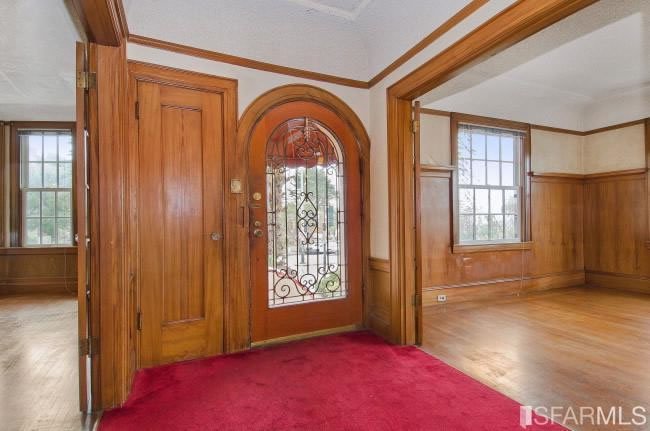Painting Over Stained Wood and Gumwood
A big question for many home owners who are looking to renovate is whether painting over stained wood is possible. It is possible, and despite the debate over whether you should, totally up to you.
Painting over stained wood in your home is a personal choice. If you have an older home, you may be questioning whether it will take away from the heritage of the home. If your house was a museum, yes it would – especially if it had never been painted. Chances are, you don’t live in a museum. So, don’t stress about it. Painting those cabinets or all that trim can brighten up the space and make it more modern. If it has design features, there are ways to paint them to make them noticeable. And as an aside, most heritage house museums have wood that has been painted over for several generations – because they didn’t stress about it either.
Tools and Materials Needed to Paint Your Stained Wood
- Tarps or plastic drop sheets
- Painter’s tape
- A multi-tool or screw driver set
- Tack cloths
- Degreasing detergent (if needed)
- Sponges and bucket
- Sandpaper
- Wood putty/filler
- Dust mask, safety goggles, rubber gloves
- Vacuum
- Painting materials
- Low odor oil-based primer
- Oil-based or waterborne paint
Prepare Stained Wood for Painting
- Remove any furniture you can or put it in the centre of the room. If any of the surfaces you will be painting have fixtures or plug/light covers, remove them as well. Tarp and cover areas and items that you don’t want to get dirty or accidentally paint. Tape the covers down to ensure dust doesn’t sneak up underneath.
- You will need to clean the surface before you do anything. A tack cloth will remove any fine particles and dirt. A degreasing detergent will remove any grease or grime. Follow up with a good wash to remove any cleaners used. Make sure everything is completely dry before you move on to the next step.
- Fill or repair any holes, deep scratches, dings, etc. using wood putty. Don’t use spackle as it won’t stick.
- Once your putty has dried, it is time to sand! This is the dusty part, so wear a mask to prevent yourself from breathing it in. How much you sand depends on the state of the wood and the stain. Since most stains and varnishes give wood a glossy, smooth finish, it will need to be roughened up, so the primer and paint will stick to it. Some finishes will already have a rough surface so might not need as much sanding.
- Use a tack cloth and vacuum to clean up any loose dust that can impact the paint. Painting overtop of dust and dirt will affect how the paint adheres to the wood. It could lead to peeling issues, which means you are repainting in a year or two.
Priming and Painting Stained Wood
Now that the surface is sanded and clean, you are ready to prime and paint. Priming first is important, especially if you are painting over a darker stain. There are stain-blocking primers available but having your primer tinted slightly to match the stain will help. A low odor oil-based primer will penetrate the wood and seal it the best. It takes a little longer to dry, so you will have to be patient.
When it comes time to paint, oil-based or waterborne paint is recommended. Oil-based often gets a bad rap for its VOC content (volatile organic compounds). These are solvents that get released into the air as it dries, a smell that often sticks around and isn’t that good for you. There is low odor oil-based paint on the market, or you can go for a waterborne alkyd paint. It performs the same as an oil-based but is also low VOC. Satin or semi-gloss is usually recommended for cabinets and furniture. Semi-gloss or high gloss will work for baseboards or trim.
If you plan on using a latex paint, be prepared to sand your oil-based primer beforehand. This will help the paint adhere to the primer. You can use a latex primer to avoid sanding, which is compatible with latex paint. It works well with in newer homes with stained wood, but it won’t block the stain and is not as durable. Oil-based is the safer and better-quality choice when it comes to painting over stained wood.
If your home has a lot of wood trim and cabinetry that you want to paint over, go for it! It will help breathe new life into your home. Painting over stained wood takes preparation and time but the final product is worth it.
Find home improvement tips and tricks from The Homezz as they attempt to make your house homier. Tips, tricks, and hacks. If there’s a way to do it easier, faster, or cheaper, The Homezz will find it and then share it with you. The blog has a range of topics covered, consisting of home maintenance, decorating tips and garden, and outdoor ideas.





Pingback: Perks of Hiring The Best Interior Designers - The Rover Post